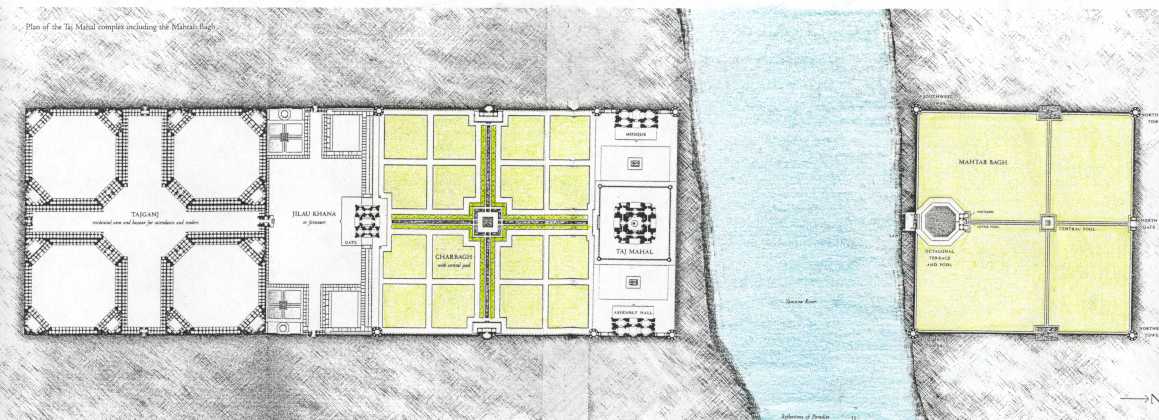 Popular stories
about the Taj Mahal in Agra will have you believe that the emperor Shah Jehan
intended to build a replica of the Taj across the river Yamuna, only this time
in dark marble in contrast to the original Taj which is in white. These plans, we
are told, were cruelly cut short by the machinations of Shah Jehan’s son,
Aurangzeb who imprisoned his father and wrested the throne from his brothers. The story concludes by telling us that
Shahjehan spent his last years gazing at the Taj from the galleries of the
tower in which he was imprisoned.
Popular stories
about the Taj Mahal in Agra will have you believe that the emperor Shah Jehan
intended to build a replica of the Taj across the river Yamuna, only this time
in dark marble in contrast to the original Taj which is in white. These plans, we
are told, were cruelly cut short by the machinations of Shah Jehan’s son,
Aurangzeb who imprisoned his father and wrested the throne from his brothers. The story concludes by telling us that
Shahjehan spent his last years gazing at the Taj from the galleries of the
tower in which he was imprisoned.
A more studied history is, alas, not quite as morbid
but still soul stirring. Archaeological work on the rumoured site for the black
Taj reveals that what the clever Shah Jehan and his team of architects and
builders did was to place the Taj not at the end of a garden, but in the centre
of a garden. The Mahtab Bahgh was built across the Yamuna, to ingeniously
integrate the river into the plan of the garden. Of course, such a scale can
only be achieved by an emperor, and indeed the idea of integrating the river,
or nature, into his garden plan could also have had a powerfully symbolic
meaning: “I am ruler of the world, I command even nature to my bidding”.

Far away from the onetime domains of Shah Jehan, outside the Dutch city of The Hague lies another garden once again built to encompass both sides of a water channel. This garden in this case is the Hofwijck built in the mid-1600s by the Dutch public figure Constantijn Huygens. Built along the canal that links the cities of Leiden and the Hague, the garden can now also be viewed from trains that shuttle past the station of Voorburg. Indeed, this was the way this itinerant was introduced to the Hofwijck.

Garden tombs in the Mughal period were more than simply vain testaments to the ego of the dead. Given that all land in the Mughal empire was deemed to be property of the emperor, building a tomb, and constituting it as a wakf was apparently one way in which notables could ensure perpetual maintenance of the tomb and secure land for their families once they had passed away. One wonders what role the garden of the Taj played in the life of Shahjehan. Did it also operate as a space that provided the emperor relief from the pressures of court? The role that the Hofwijck played in the life of Huygens is quite clear since the name of the garden itself suggests that it was meant to be a palace “hoff”, escape "wijck”, or escape from the palace.
Just like the Taj has lost its connection with the Mahtab Bagh across the river, and indeed, its engagement with the buildings in front of it, so too the Hofwijck has lost the garden that originally stood across the canal, and portions of the garden that stood in front of it. Sometime in the early 1900s a portion of the garden was lost to a railway line and station and today trains continue to rumble across an embankment built on land that once was a part of the garden.
There is a world of a difference between the Taj and the Hofwijck, and the most obvious one is that of scale. What sets the Hofwijck apart, however, is the careful manner in which an attempt has been made to reconstruct the garden of the Hofwijck as Huygens would have designed it way back in the 1600s. Unlike those who visit the Taj, visitors to the garden are aided in ample measure by an audio guide that provides music and context through a tour of the garden, allowing one to come away from the Hofwijck intellectually as well as emotionally satisfied.
(A version of this post was first published in The Goan on 15 March 2014)


